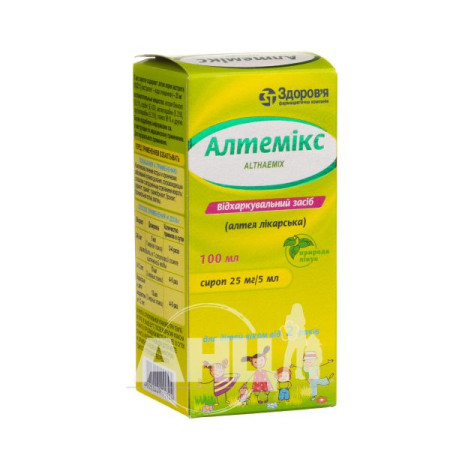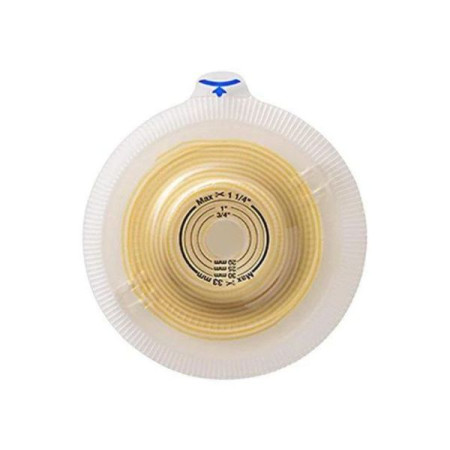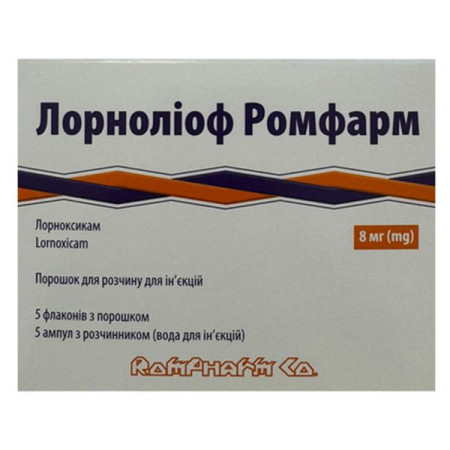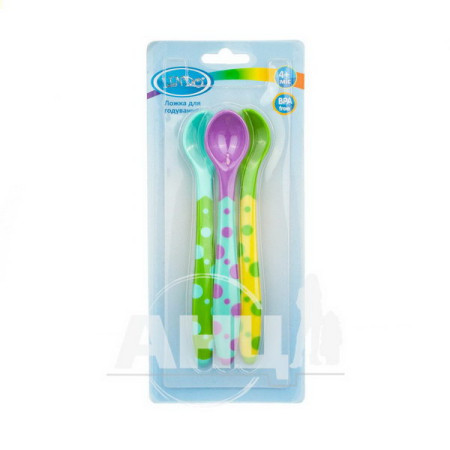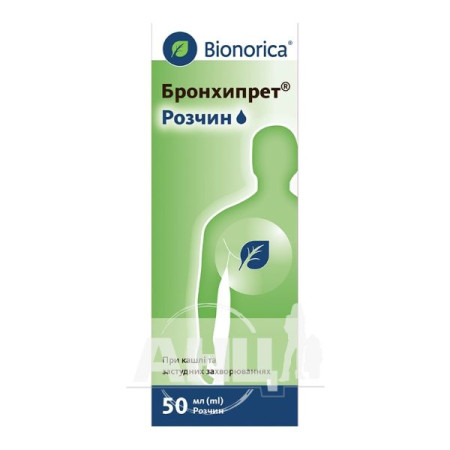Zolvist solution for infusion 5 mg/100 ml 100 ml

Instructions for use Zolovysta solution for infusion 5 mg/100 ml 100 ml
Composition
active ingredient: zoledronic acid;
100 ml of solution contains 5 mg of zoledronic acid, corresponding to 5.33 mg of zoledronic acid monohydrate;
Excipients: trisodium citrate dihydrate, mannitol (E 421), hydrochloric acid, sodium hydroxide, water for injections.
Dosage form
Solution for infusion.
Main physicochemical properties: transparent, colorless solution.
Pharmacotherapeutic group
Agents affecting bone structure and mineralization. Bisphosphonates. ATC code M05B A08.
Pharmacological properties
Pharmacodynamics.
Zoledronic acid belongs to a new class of bisphosphonates that specifically target bone tissue. It is one of the most potent inhibitors of osteoclastic bone resorption known to date.
The selective action of bisphosphonates on bone is based on their high affinity for mineralized bone tissue, but the molecular mechanism leading to the inhibition of osteoclastic activity is not understood. Animal studies have shown that zoledronic acid inhibits bone resorption without adversely affecting bone formation, mineralization, or mechanical properties.
In addition to inhibiting osteoclastic bone resorption, zoledronic acid has direct antitumor effects on cultured human myeloma and breast cancer cells by inhibiting cell proliferation and inducing apoptosis. This suggests that zoledronic acid may have antimetastatic properties. In preclinical studies, the following properties have been demonstrated:
In vivo – inhibition of osteoclastic bone resorption, which acts on the structure of the microcrystalline matrix of bone, which reduces tumor growth, antiangiogenic effect (effect on blood vessels, which leads to a decrease in blood supply to the tumor), analgesic effect.
In vitro – inhibition of osteoblast proliferation, cytostatic effect, pro-apoptotic effect on tumor cells, synergistic cytostatic effect with other antitumor drugs, anti-adhesive and anti-invasive effect.
Pharmacokinetics.
Pharmacokinetic data in bone metastases were obtained after single and repeated 5- and 15-minute infusions of 2, 4, 8 and 16 mg zoledronic acid in 64 patients. Pharmacokinetic parameters are independent of dose.
After the start of the zoledronic acid infusion, plasma drug concentrations increase rapidly, reaching a peak at the end of the infusion, followed by a rapid decrease in concentration to 10% of peak after 4 hours and to <1% of peak after 24 hours, with a successively prolonged period of low concentrations not exceeding 0.1% of peak until the second infusion on day 28.
Zoledronic acid administered intravenously is eliminated by the kidneys in 3 phases: a rapid biphasic elimination of the drug from the systemic circulation with a half-life of t½α=0.24 hours and t½β=1.87 hours and a prolonged phase with a terminal half-life of t½γ=146 hours. No accumulation of the drug in the blood plasma was observed with repeated administration every 28 days. Zoledronic acid is not metabolized and is excreted unchanged by the kidneys. During the first 24 hours, 39±16% of the administered dose is found in the urine. The rest of the drug is mainly bound to bone tissue. Then, zoledronic acid is slowly released back from the bone tissue into the systemic circulation and excreted by the kidneys. The total clearance of the drug in the body is 5.04 ± 2.5 l / h and is independent of the dose of the drug, gender, age, race and body weight of the patient. Increasing the infusion time from 5 to 15 minutes leads to a decrease in the concentration of zoledronic acid by 30% at the end of the infusion, but does not affect the plasma concentration-time curve (AUC).
The variability of pharmacokinetic parameters of zoledronic acid in different patients was high, as with other bisphosphonates.
There are no data on the pharmacokinetics of zoledronic acid in patients with hypercalcemia and hepatic insufficiency. According to in vitro data, zoledronic acid does not inhibit human P450 enzymes and is not biotransformed; according to experimental studies in animals, less than 3% of the administered dose is excreted in the feces, which suggests that the state of liver function does not affect the pharmacokinetics of zoledronic acid.
Renal clearance of zoledronic acid correlates with creatinine clearance, with renal clearance accounting for 75±33% of creatinine clearance, reaching a mean of 84±29 mL/min (range 22-143 mL/min) in 64 cancer patients enrolled in the study. Analysis of the patient population showed that patients with creatinine clearance of 20 mL/min (acute renal failure) and 50 mL/min (moderate renal failure) had relative clearances of 37% and 72%, respectively. However, pharmacokinetic data in patients with acute renal failure (<30 mL/min) are limited.
Zoledronic acid has been shown to have a low affinity for cellular components of the blood. Plasma protein binding is low, with an unbound fraction ranging from 60% at 2 ng/mL to 77% at 2000 ng/mL of zoledronic acid.
Indication
Treatment of osteoporosis in postmenopausal women and in men at increased risk of fracture, including those with a recent low-trauma hip fracture.
Treatment of osteoporosis associated with long-term systemic glucocorticoid therapy in postmenopausal women and in men at increased risk of fractures.
Treatment of Paget's disease of bone in adults.
Contraindication
Hypersensitivity to the active substance or to any component of the medicinal product or hypersensitivity to bisphosphonates.
Hypocalcemia.
Severe renal impairment with creatinine clearance <35 ml/min.
Pregnancy or breastfeeding.
Interaction with other medicinal products and other types of interactions
Specific drug interaction studies with zoledronic acid have not been performed. Zoledronic acid is not systematically metabolized and does not affect human cytochrome P450 enzymes in vitro. Zoledronic acid is poorly bound to plasma proteins (binding is approximately 43-55%), so interactions resulting from substitution of highly bound drugs are unlikely.
Zoledronic acid is eliminated from the body by renal excretion. Caution should be exercised when using Zolevista in combination with medicinal products that may significantly affect renal function (e.g. aminoglycosides or diuretics that may cause dehydration).
In patients with renal impairment, systemic exposure to concomitantly administered medicinal products that are primarily excreted by the kidneys may be increased.
Application features
Zoledronic acid is contraindicated in patients with severe renal impairment (creatinine clearance <35 ml/min) due to the risk of renal failure in this patient population. Renal impairment has been observed following administration of zoledronic acid, particularly in patients with pre-existing renal dysfunction or other risk factors including older age, concomitant nephrotoxic medicinal products, concomitant diuretic therapy or dehydration following administration of zoledronic acid. Renal impairment has been observed in patients following a single dose of zoledronic acid. Renal failure requiring dialysis or resulting in death has been reported rarely in patients with pre-existing renal impairment or any of the risk factors described above.
To minimize the risk of adverse renal reactions, the following precautions should be taken into account:
Before each administration of Zolevista, creatinine clearance should be determined taking into account body weight using the Cockcroft-Gault formula;
Transient increases in serum creatinine may be greater in patients with pre-existing renal impairment;
Serum creatinine levels should be monitored in patients at risk;
Zolevist should be used with caution with concomitant use of other drugs that may affect kidney function;
Patients, especially elderly patients and those taking diuretics, require adequate hydration before administration of Zolevista;
A single dose of Zolevista should not exceed 5 mg, and the infusion duration should be at least 15 minutes.
Existing hypocalcemia should be treated with adequate calcium and vitamin D intake before starting Zolevista therapy. Other disorders of mineral metabolism, such as decreased parathyroid function, impaired intestinal calcium absorption, also require effective treatment. These patients should be closely monitored by the physician. Increased bone remodeling is characteristic of Paget's disease of the bone. Due to the rapid onset of the effect of zoledronic acid on bone remodeling, transient hypocalcemia, sometimes with clinical manifestations, may occur, usually reaching a maximum within the first 10 days after Zolevista infusion.
Adequate calcium and vitamin D intake is recommended when using Zolevista. In addition, patients with Paget's disease must be provided with adequate calcium supplementation, corresponding to at least 500 mg elemental calcium twice daily for 10 days after Zolevista administration. Patients should be informed of the symptoms of hypocalcemia and adequately monitored during the period of risk. In patients with Paget's disease, it is recommended that serum calcium levels be measured prior to Zolevista infusion.
Severe and sometimes disabling bone, joint and/or muscle pain has been reported rarely in patients taking bisphosphonates, including zoledronic acid.
Osteonecrosis of the jaw.
In post-marketing studies, osteonecrosis of the jaw has been reported in patients receiving zoledronic acid for osteoporosis.
When assessing a patient's risk of developing osteonecrosis of the jaw, the following should be considered:
the potency of the drug that inhibits bone resorption (the risk is higher for highly active compounds), the route of administration (the risk is higher for parenteral administration), and the cumulative dose of bone resorption therapy;
cancer, comorbidities (such as anemia, coagulopathy, infection), smoking;
concomitant therapies: corticosteroids, chemotherapy, angiogenesis inhibitors, head and neck radiotherapy;
poor oral hygiene, periodontal disease, poorly fitting dentures, history of dental disease, invasive dental procedures such as tooth extraction. All patients are advised to maintain good oral and dental hygiene, undergo periodic dental check-ups, and promptly report any oral symptoms such as tooth mobility, pain or swelling, non-healing ulcers, or discharge during treatment with zoledronic acid. During treatment, invasive dental procedures should be performed with caution, avoiding close proximity to the zoledronic acid application site.
The treatment plan for patients who develop osteonecrosis of the jaw should be developed in close collaboration between a physician and a dentist or dental surgeon experienced in the management of patients with osteonecrosis of the jaw. Temporary discontinuation of zoledronic acid should be considered until the condition improves and risk factors are minimized. Osteonecrosis of the external auditory canal.
Osteonecrosis of the external auditory canal has been reported with bisphosphonates, mainly with long-term therapy. Possible risk factors for osteonecrosis of the external auditory canal include steroid use and chemotherapy and/or local risk factors such as infection or trauma. The possibility of osteonecrosis of the external auditory canal should be considered in patients receiving bisphosphonates who present with auditory symptoms, including chronic ear infections. Atypical femoral fractures.
Atypical subtrochanteric and diaphyseal fractures of the femur have been reported with bisphosphonate therapy, primarily in patients receiving long-term treatment for osteoporosis. These transverse or oblique fractures with a short fracture line can occur anywhere along the length of the femur, from below the lesser trochanter to above the supracondylar eminence. These fractures occur with minimal or no trauma, and in some patients, hip or groin pain, often with radiographic evidence of a stress fracture, occurs weeks or months before a complete femoral fracture is detected. Fractures are often bilateral; therefore, patients receiving bisphosphonate therapy who have a confirmed diaphyseal femoral fracture should have the other hip examined. Delayed union of these fractures has been reported. Discontinuation of bisphosphonate therapy in patients with suspected atypical femoral fractures should be considered after careful patient evaluation, taking into account the individual benefit-risk assessment. During bisphosphonate treatment, patients should report any hip, hip, or groin pain, and all patients presenting with such symptoms should be evaluated for an incomplete femoral fracture.
General.
Risk of acute phase reactions.
Acute phase reactions or post-dose symptoms, including fever, myalgia, influenza-like symptoms, arthralgia and headache, have been reported, most of which occurred within three days of zoledronic acid administration. Occasionally, acute phase reactions may be severe or prolonged. The frequency of symptoms occurring within the first three days after drug administration may be reduced by taking paracetamol or ibuprofen immediately after Zolevista administration. It is also advisable to delay treatment if the patient is clinically unstable due to an acute medical condition and is experiencing acute phase reactions (see section 4.8).
Other medicines containing zoledronic acid as the active substance are available for oncology use. Patients being treated with Zolevista should not take these medicines or any other bisphosphonates at the same time, as the combined effects of these substances are unknown.
Important information about excipients.
1 ml of solution contains 0.08 mg (8 mg/100 ml) sodium. The sodium content should be taken into consideration by patients on a controlled sodium diet.
Use during pregnancy or breastfeeding
Pregnancy.
Zolevista is contraindicated during pregnancy. There are no data on the use of zoledronic acid in pregnant women. Animal studies have shown reproductive toxicity, including malformations. The potential risk to humans is unknown.
Breast-feeding.
It is not known whether zoledronic acid is excreted in human milk. Zolevista is contraindicated during breastfeeding.
Zolevista is not recommended for use in women of childbearing potential. Fertility. An exaggerated pharmacological effect has been observed, which is considered to be related to inhibition of skeletal calcium mobilization. The results of the studies do not allow for definitive conclusions regarding the effect of zoledronic acid on human fertility.
Ability to influence reaction speed when driving or using other mechanisms
Adverse reactions, such as dizziness, may affect the ability to drive or operate machinery.
Method of administration and doses
Doses.
Zolevist should be administered under the condition that the patient is adequately hydrated. This is especially important for elderly patients (≥65 years) and patients receiving diuretics. Adequate calcium and vitamin D intake is recommended when using Zolevist.
Osteoporosis.
Treatment of postmenopausal osteoporosis, osteoporosis in men, treatment of osteoporosis associated with long-term systemic glucocorticoid therapy: the recommended dose is 1 intravenous infusion of 5 mg Zolevista per year.
The optimal duration of bisphosphonate treatment for osteoporosis has not been established. The need for continued treatment should be reviewed periodically, assessing the benefits and risks of using Zolevista individually for each patient, especially after 5 or more years of use of the drug.
For patients with a recent low-trauma hip fracture, it is recommended that Zolevista be administered two or more weeks after hip fracture surgery. For patients with a recent low-trauma hip fracture, a loading dose of 50,000 to 125,000 IU of vitamin D orally or intramuscularly is recommended prior to the first administration of Zolevista.
Paget's disease.
The medicine should only be prescribed by doctors experienced in the treatment of Paget's disease of the bone. The recommended dose is a single intravenous infusion of 5 mg Zolevista. In addition, patients with Paget's disease require additional calcium, at least 500 mg of elemental calcium twice daily for at least 10 days after administration of Zolevista.
Repeated treatment with Paget's disease drug.
After initiation of treatment with zoledronic acid for Paget's disease, a prolonged remission period is observed in patients who respond to treatment. Retreatment involves an additional intravenous infusion of 5 mg Zolevista to patients who relapse, at intervals of 1 year or more after initiation of treatment. Data on retreatment of Paget's disease are limited.
Special patient groups.
Patients with renal failure.
Zolevista is not recommended for patients with renal impairment with creatinine clearance <35 mL/min. No dose adjustment is required for patients with creatinine clearance >35 mL/min.
Patients with liver failure.
No dose adjustment is necessary.
Elderly patients (≥ 65 years).
No dose adjustment is necessary since bioavailability, distribution, and elimination of the drug were similar in elderly and younger patients.
Instructions for use of the medicinal product.
Zolevist should be administered slowly through a separate, air-evacuated infusion line at a constant rate of administration. The administration time should be at least 15 minutes.
Any unused solution or waste material should be disposed of in accordance with local requirements. Only clear solutions, free from visible particles and discolouration, should be used. If the solution is refrigerated, it should be allowed to reach room temperature before use. Aseptic technique should be used when preparing the solution for intravenous infusion. The medicinal product should be used for single use only. From a microbiological point of view, the medicinal product should be used immediately. It is recommended that the solution should not be stored for more than 24 hours at 2-8ºC.
Children.
Zolevista is not recommended for use in children and adolescents (under 18 years of age) due to insufficient data on safety and efficacy in this age group.
Overdose
Clinical experience of acute overdose with zoledronic acid is limited. Symptoms: Patients who have received a dose of the drug in excess of the recommended dose should be under constant medical supervision, as impaired renal function (including renal failure), changes in serum electrolytes (including concentrations of calcium (clinically significant hypocalcemia), phosphates and magnesium) may occur.
Treatment. In case of hypocalcemia, calcium gluconate infusion is recommended according to clinical indications. Treatment is symptomatic.
Side effects
The following adverse reactions are listed by MedDRA system organ class and frequency: very common (≥1/10), common (≥1/100, <1/10), uncommon (≥1/1,000, <1/100), rare (≥1/10,000, <1/1,000), very rare (<1/10,000), not known (cannot be estimated from the available data). Within each frequency grouping, undesirable effects are presented in order of decreasing seriousness.
Infections and infestations:
uncommon – influenza, nasopharyngitis.
Blood and lymphatic system disorders:
uncommon – anemia.
frequency unknown** – hypersensitivity reactions, including rare cases of bronchospasm, urticaria and angioedema and very rare cases of anaphylactic reactions/shock.
From the side of metabolism:
common – hypocalcemia*;
uncommon – decreased appetite,
rarely common – hypophosphatemia.
From the psyche:
uncommon – insomnia.
From the nervous system:
common – headache, dizziness;
uncommon – lethargy, paresthesia, drowsiness, tremor, fainting (syncope), taste disturbance.
On the part of the organs of vision:
common – eye hyperemia;
uncommon – conjunctivitis, eye pain;
rarely - uveitis, episcleritis, iritis;
frequency unknown** – scleritis and eye inflammation.
From the side of the organs of hearing and vestibular apparatus:
uncommon – vertigo.
From the cardiovascular system:
common – atrial fibrillation;
uncommon – increased heartbeat; occurrence of atrial fibrillation; arterial hypertension, hot flashes;
frequency unknown** – hypotension (in some patients with risk factors).
From the respiratory system, chest organs and mediastinum:
uncommon – cough, shortness of breath.
From the gastrointestinal tract:
common – nausea, vomiting, diarrhea;
uncommon – dyspepsia, epigastric pain, abdominal pain, gastroesophageal reflux disease, constipation, dry mouth, esophagitis, toothache, gastritis#.
Skin and subcutaneous tissue disorders:
uncommon – rash, hyperhidrosis, itching, erythema.
Musculoskeletal and connective tissue disorders:
common – myalgia, arthralgia, bone pain, back pain, pain in extremities;
uncommon – neck pain, musculoskeletal stiffness, joint swelling, muscle spasms, shoulder pain, musculoskeletal chest pain, musculoskeletal pain, joint stiffness, arthritis, muscular weakness;
rare – atypical subtrochanteric and diaphyseal femoral fracture† (bisphosphonate class adverse reaction);
very rarely - osteonecrosis of the external auditory canal (adverse reactions typical of bisphosphonates);
frequency unknown** – osteonecrosis of the jaw.
From the kidneys and urinary system:
uncommon – increased blood creatinine, pollakiuria, proteinuria;
frequency unknown** - renal impairment. Rare cases of renal failure requiring hemodialysis and rare fatalities have been observed in patients with pre-existing renal dysfunction or other risk factors such as advanced age, concomitant use of nephrotoxic drugs, concomitant diuretic therapy or dehydration in the post-infusion period.
Laboratory indicators:
common – increased C-reactive protein levels;
uncommon – decreased blood calcium levels.
General disorders and administration site conditions:
very common – fever;
common – flu-like symptoms, chills, fatigue, asthenia, pain, malaise, injection site reaction;
uncommon – peripheral edema, thirst, acute phase reaction, non-cardiac chest pain;
frequency unknown** - secondary dehydration of the body, associated with symptoms such as fever, vomiting and diarrhea, developing after administration of the drug.
# Observed in patients who were simultaneously taking glucocorticosteroids.
* Common only in Paget's disease.
**Based on post-marketing experience. Frequency cannot be estimated from available data.
†Identified in the post-marketing period.
Drug class effects.
Kidney dysfunction.
Renal impairment has been reported with zoledronic acid. Based on an analysis of safety data from the post-marketing studies of zoledronic acid for the prevention of bone-related adverse events in patients with advanced malignancies, the incidence of renal impairment considered to be related to zoledronic acid was as follows: multiple myeloma (3.2%), prostate cancer (3.1%), breast cancer (4.3%), lung cancer and other solid tumors (3.2%). Factors that may increase the risk of renal impairment include dehydration, pre-existing renal impairment, multiple courses of zoledronic acid or other bisphosphonates, and concomitant use of other nephrotoxic agents or reduction of the recommended infusion time. Cases of worsening renal function, progression of renal failure and the need for hemodialysis have been reported with the first or single use of zoledronic acid at a dose of 4 mg.
Hypocalcemia.
In clinical trials in osteoporosis, approximately 0.2% of patients experienced a significant decrease in serum calcium levels (less than 1.87 mmol/L) after administration of zoledronic acid. No cases of symptomatic hypocalcemia were observed.
Transient asymptomatic decreases in serum calcium levels below the normal range (less than 2.10 mmol/L) were observed in 2.3% of patients treated with zoledronic acid in a large clinical trial compared with 21% of patients treated with zoledronic acid in the Paget's disease trials. The incidence of hypocalcaemia was significantly lower after subsequent administration of the medicinal product.
In the postmenopausal osteoporosis study for the prevention of clinical fractures after hip fracture and Paget's disease studies, all patients received appropriate vitamin D and calcium supplements. In the clinical fracture prevention study after a recent hip fracture, vitamin D levels were not routinely measured, but most patients received a loading dose of vitamin D prior to zoledronic acid administration.
Acute phase reactions.
These adverse reactions include fever, myalgia, headache, pain in the extremities, nausea, vomiting, diarrhea and arthralgia, as well as arthritis associated with joint swelling, which may occur within the first 3 days after zoledronic acid infusion. These reactions are referred to as “flu-like” or “post-drug” syndrome.
Local reactions: Local reactions at the infusion site (0.7%) have been reported: redness, swelling and/or pain following administration of zoledronic acid.
Osteonecrosis of the jaw: Cases of necrosis of the jaw have been observed primarily in cancer patients receiving medicinal products that inhibit bone resorption, including zoledronic acid.
Reporting of suspected adverse reactions.
Reporting suspected adverse reactions after the marketing authorisation of a medicinal product is an important procedure. It allows for continued monitoring of the benefit-risk balance of the medicinal product in question. Healthcare professionals should report any suspected adverse reactions via the national reporting system.
Expiration date
30 months.
Storage conditions
Store in original packaging at a temperature not exceeding 25 ° C. Keep out of the reach of children.
Incompatibility
This medicinal product must not be mixed with calcium-containing infusion solutions. It must not be mixed or administered intravenously with any other medicinal product through the same infusion line.
Packaging
100 ml in a container in a protective bag in a cardboard box.
Vacation category
According to the recipe.
Producer
ALTAN PHARMACEUTICALS, S.A.
Address
Poligono Industrial de Bernedo, s/n, Bernedo, Alava, 01118, Spain.
There are no reviews for this product.
There are no reviews for this product, be the first to leave your review.
No questions about this product, be the first and ask your question.




